How to Fix a Bow in Drywall
Drywall is a type of wallboard made from compressed gypsum. It is commonly used in the construction of interior walls and ceilings. A bow in drywall is caused by the expansion of the gypsum core due to moisture exposure.
This can happen if the wallboard is exposed to high humidity or if there is a leak in the wall. Whatever the cause, you’ll need to fix the problem before finishing your project. The first thing you need to do is identify the source of the problem.
If you’ve ever noticed a crack in your drywall, you may have also seen a bow. A bow results from the damage widening and causes the drywall to curve outwards. If left untreated, a bow can worsen and eventually cause the drywall to break.
This blog post on how to fix a bow in drywall will first show you how to identify the source of the bow in the drywall and, eventually, the steps to fix it using some simple methods.
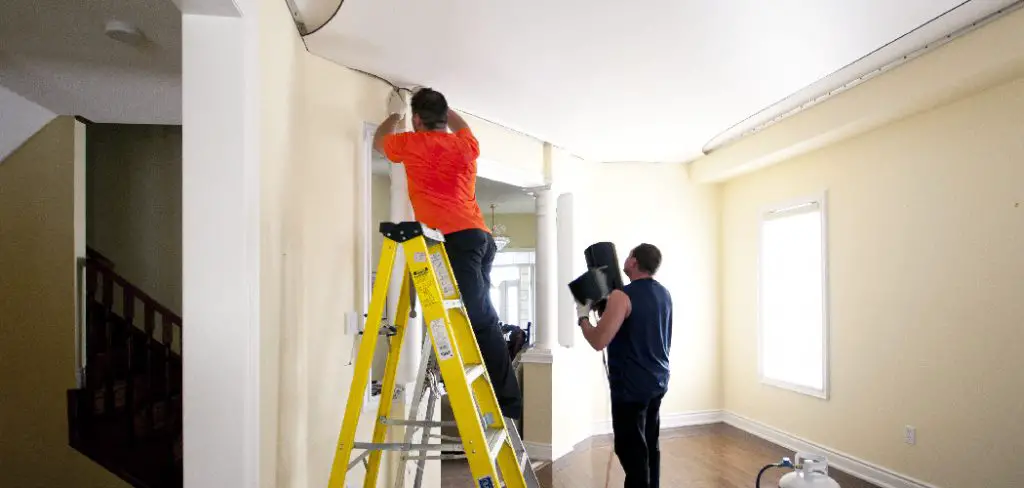
What is a Bowed Drywall?
Drywall is used due to its low cost, flexibility, and ease of installation. Drywall panels are produced in various thicknesses ranging from 1/4 inch to 5/8 inch. The most common type used in residences is 1/2-inch thick. Drywall is made of a gypsum core sandwiched between two layers of heavy paper. The paper face delaminates from the gypsum core when drywall becomes wet, causing the drywall to warp or bow.
Bowed drywall is a piece of drywall that has curved or bowed outwards due to some force. A bowed wall is not only unsightly; it’s a structural issue that needs to be fixed as soon as possible. If left untreated, a bowed wall can cause the drywall to break, which could lead to severe injuries. Some accidents caused by bowed drywall have even resulted in death.
What Causes Bowed Drywall?
There are several possible causes of bowed drywall, such as high humidity, poorly ventilated rooms, leaks in the wall, temperature changes, poor installation, improper storage, the weight of the drywall, and so on. Whatever the cause, you’ll need to fix the problem before finishing your project
1. Humidity:
Humidity is one of the most common causes of bowed drywall. When there’s too much moisture in the air, it can cause the drywall to swell and eventually bow outwards. Humidity can also cause the paper backing on the drywall to delaminate from the gypsum core, which will ultimately lead to the drywall bowing. Water damage can cause the gypsum core to expand,
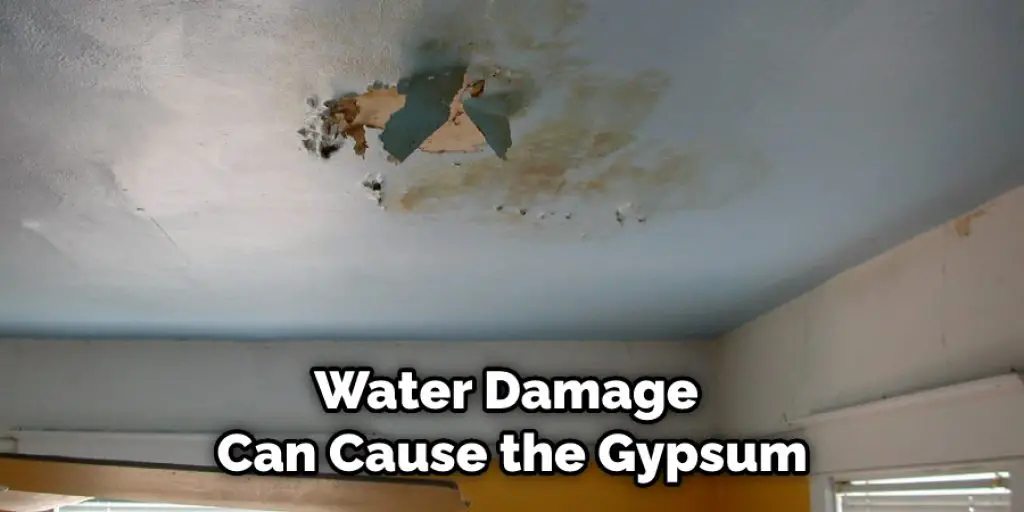
2. Temperature Changes:
Temperature changes are another common cause of bowed drywall. When the temperature outside fluctuates, it can cause the drywall to expand and contract. This can cause the drywall to become bowed or even crack.
3. Poor Installation:
If the drywall wasn’t installed properly, it’s more likely to become bowed over time. Poor installation can include not securing the drywall properly, not using the suitable screws or nails, and not applying enough joint compound.
4. Weight of the Drywall:
The weight of the drywall itself can also cause it to bow. If the drywall is too heavy for the studs, it’s attached to, and it can cause the drywall to sag and eventually bow outwards.
5. Improper Storage:
If the drywall wasn’t stored properly before installation, it could also cause problems. Drywall should be stored in a dry, cool place. If it’s stored in a humid or wet environment, it can absorb moisture and become bowed.
If you find that your drywall has started to bow, there are a few things you can do to fix the problem.
Identifying Source of the Bow in Drywall
The first step in fixing bowed drywall is to identify the source of the problem. If you have a crack in your drywall, chances are there’s a bow behind it. To fix the problem, you’ll first need to find the source of the bow and address it. The following methods can be used to find it-
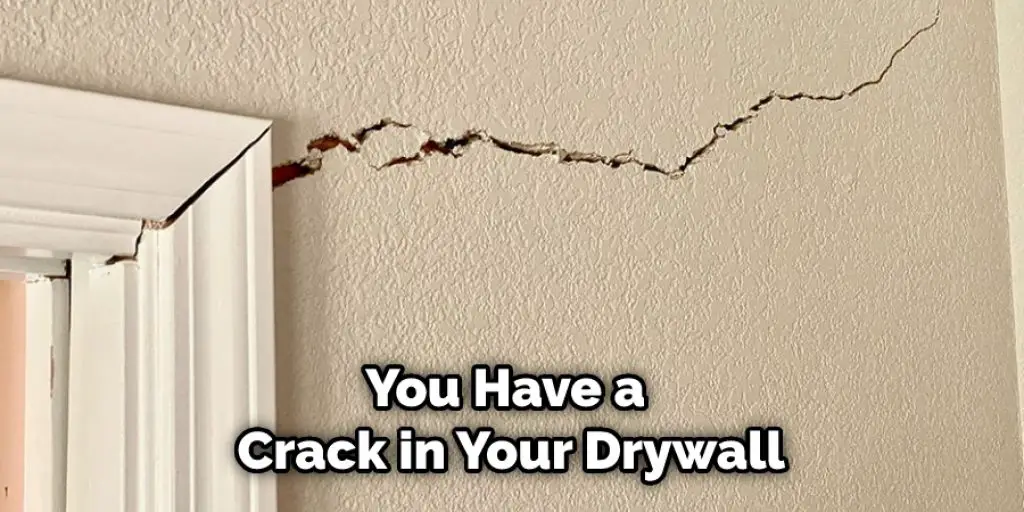
Method 1: Use a Stud Finder.
If you have a stud finder, you can use it to locate the source of the bow. First, find the center of the bow and mark it with a pencil. Then, move the stud finder along the wall until you find the center of the bow. Once you’ve found it, mark the spot with a pencil so you can easily find it later.
Method 2: Use a Flashlight
If you don’t have a stud finder, you can use a flashlight to locate the source of the bow. First, turn off all the room lights, so it’s completely dark. Then, hold the flashlight up to the wall and move it around until you see the light coming through from behind the drywall. Once you’ve found the spot, mark it with a pencil so you can easily find it later.
Method 3: Use a level
Another way to find the source of the problem is to use a level. Place the level on the drywall and see where the bubble is. The bubble will indicate where the bow is.
Method 4: Use a tape
Yet another way to find the source of the problem is to use a tape measure. Measure from one end of the drywall to the other and mark the spot where the bow is.
Once you’ve found the source of the problem, you can start to fix it.
How to Fix a Bow in Drywall
Depending on the severity of the problem, there are a few different ways on how to fix a bow in drywall. You can use a patching compound for small bows. For larger bows, you may need to remove and replace the damaged section of drywall.
Smaller Bows
You can use a patching compound to fill in the cracks and level off the surface for small bows by following the steps-
- Start by sanding down the area around the crack to create a smooth surface.
- Then, apply the patching compound with a putty knife and spread it evenly over the area.
- Allow it to dry for 24 hours before painting or to wallpaper over it.
Larger Bows
For larger bows, you’ll need to remove and replace the damaged section of drywall by following the steps-
- Start by cutting out the damaged section of drywall with a utility knife.
- Then, measure the opening and cut a piece of drywall to fit.
- Install the new piece of drywall by screwing it into the studs.
- Apply joint compound to the seams and allow it to dry. Or you may apply construction adhesive to the back of the new piece of drywall and press it into place.
- Secure the drywall in place with drywall screws.
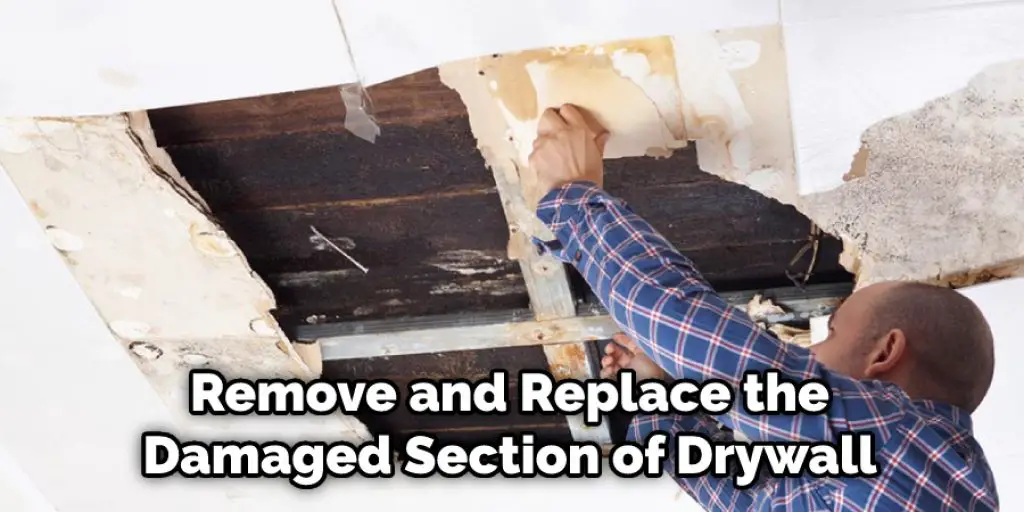
Some Other Simple Ways to Straighten a Bow in Drywall
There are a few other ways on how to fix a bow in drywall that is simple and effective.
- If the bow in your drywall is caused by too much moisture in the air, you can try running a dehumidifier in the room to help reduce the moisture.
- Another way to help straighten a bow in drywall is to increase the temperature in the room. This will help to reduce the amount of moisture in the air and make the drywall less likely to bow.
- If the weight of the drywall is causing it to bow, you can try adding additional support by screwing more screws into the studs or by adding a piece of wood to the back of the drywall. You can also add more screws to the existing ones to secure the drywall better.
- You can use a straight edge to push the bowed drywall back into place.
- Another way is to use a drywall anchor to pull the drywall back into place.
You Can Chack It Out to Remove Spray on Bedliner From Paint
How Much Does It Cost to Fix a Bowed Wall?
Bowing drywall might cost you $75-$300 to repair. But it all depends on how big the bowing is, where the bowing is, and how severe the bowing is. If a water leak causes the bowing, you will also need to repair the source of the leak.
You can try to fix the problem yourself by following the steps above. But if the problem is severe, it’s best to hire a professional to fix it for you.
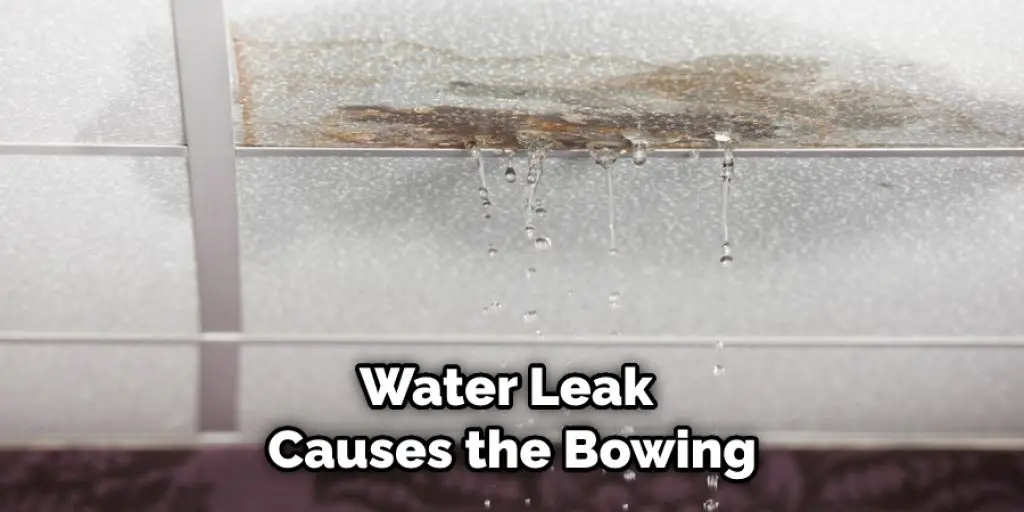
Conclusion
Drywall is found in most homes and is used to create walls and ceilings. Drywall is made from a gypsum core that is covered in paper. Bowed drywall can cause cracking and eventually lead to the drywall breaking if it is not fixed. So, it’s important to know how to identify and fix the issue as soon as possible because if left unchecked, bowed drywall can lead to bigger problems down the road. The four methods for finding the problem’s source are a stud finder, a flashlight, a level, and a tape measure.
Some other simple ways to straighten a bow in drywall are increasing the temperature in the room, adding additional support, or using a straight edge to push the drywall back into place.
Repairing bowed drywall may seem intimidating, but with our instructions, you should be able to do it yourself quickly and easily. Always use caution when working with sheetrock – it’s easy to cut yourself! Please call a professional if you have any doubts about your ability on how to fix a bow in drywall. We hope our tips help and that your home looks amazing once again!








